Well, at least Hyundai is up front about what their new Kona SUV is built for. Right there in the title of their press release, the thing reads: “Kona: World Premiere Of An Urban SUV For Active Lifestyles.” Far too many SUVs are pitched with this farcical idea that you’re going to be driving your brand new Range Rover or Cadillac XT5 across the Darién Gap on a daily basis to pick up Atticus and Alistair from lacrosse practice.
So points to Hyundai for at least being honest and up front about what the Kona is going to be used for.
Platforms, Engines & Suspension
Hyundai’s Kona jumps into the company’s lineup along side the Tucson, Santa Fe, and Santa Fe Sport as the Koreans continue to pursue a wider customer base, and deliver SUVs with leading edge designs, lots of interior refinement, and cargo room. This all seems to fit in with Hyundai’s implicit corporate ethos of, “buy one of our rides, it’s stylish, dependable, and a good value for the money. When you’re done with it in five years, trade it in, and we’ll sell you another stylish ride.” Hyundai knows none of their vehicles will be showing up on the 18th green at Pebble Beach in the future, and they seem okay with that fate.
The Kona rides on an all-new compact SUV platform, with an optimized powertrain layout and four-wheel drive. The new Kona is offered with a surprising range of gasoline and diesel engines too. There is a 2.0-liter MPI Atkinson cycle engine paired with a six-speed automatic transmission, the company’s Gamma 1.6 T-GDI diesel plant mated to a seven-speed dual clutch transmission, and Hyundai’s downsized 1.0 T-GDI turbocharged three-cylinder engine with a six-speed manual. There is an available small displacement diesel engine for European markets too.
The front suspension is via McPherson struts, with best-in-class tire trace to enhance comfort and reduce NVH (noise, vibration, and harshness). 2WD and 4WD models of the Kona get completely different rear suspension systems as one would expect. The 2WD setup gets a high-stiffness torsion beam affair for greater stability and control, while the 4WD models feature a dual-arm multilink system to improve overall driving dynamics on all surfaces.
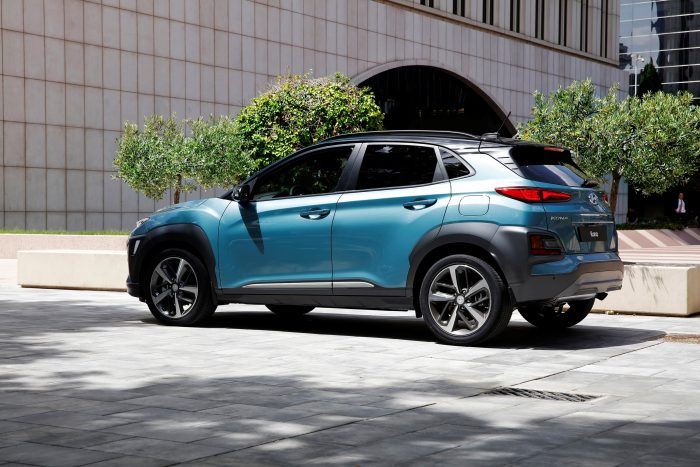
Hyundai is the only manufacturer to make its own steel to produce its vehicles globally, providing great benefits for the Kona. The lightweight body frame has been developed with 51.8% advanced high-strength steel to deliver greater safety for customers. Photo: Hyundai Motor Company.
Exclusive Treatments
The Kona’s exterior styling includes “composite lamps” with slim daytime running lights that incorporate turn signals separate from the LED headlights. The Kona keeps up the new family identity styling cues, like the cascading grille with the mesh pattern and the wing-type fenders that dominate the front design. Finally, Hyundai says the front is “powerful” and that “its armor shows its readiness for extreme activities.” This elicited a groan from me that I care not to expand on at this time.
The exterior also features lots of this black, I dunno, cladding I suppose. Hyundai refers to it, repeatedly, as contrasting “armor” (which is horrible) and notes that it provides a protective skin while connecting the front to the rear visually. Whatever. The slim brake lights, turn indicators, and reverse lamps surrounded by the “protective skin” begin at the C pillar. The roof is finished in a two tone color scheme as well.
The interior of the Kona aims to be sleek and simple, centered around the audio, visual, and nav monitor. The mechanical air vents and button arrangement go for high-tech functionality and the HVAC controls are surrounded by soft, fluid details that contribute to a “sensuous experience” and “enhance the comfort-focused environment.” A-hemm okay? The rear seats fold flat for a two-level load floor for easy access for a bicycle or golf clubs.
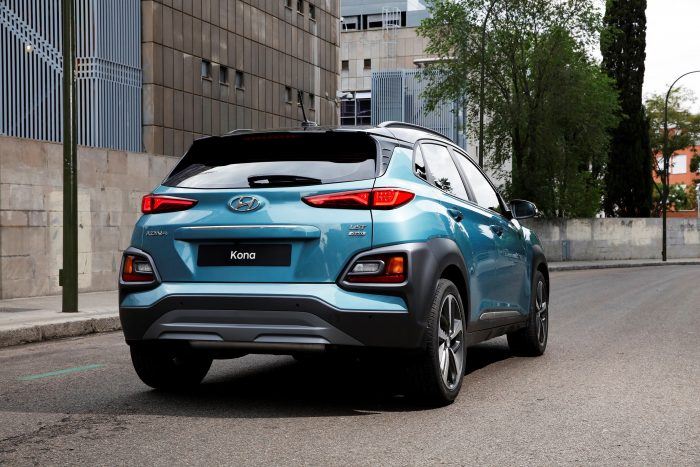
“Hyundai Motor sets out to care for its customers in all of its activities,” reads a recent press release from the automaker. “The new model showcases Hyundai Motor’s capabilities and commitment to enhancing the safety of drivers, passengers, and fellow road-users.” Photo: Hyundai Motor Company.
Safety & Security
The Kona’s active safety features include Forward Collision-Avoidance Assist to detect an imminent collision and minimize damage by braking autonomously. There is also Lane Keeping Assist, High Beam Assist, and Driver Attention Warning (humorously labeled as DAW, as in “DAW! Wake up stupid, you’re about to crash!!”). Blind-Spot Collision Warning? Yup. Rear Cross-Traffic Collision Warning? Yup, the Kona’s got that too.
Island Antics
Hyundai also points out the Kona is named after that chunk of The Big Island now littered with tourist hotels and stuff like that. As a former resident of those blessed islands, I was going to go into a rant about how you should visit, spend lots of money, and then leave, because … well, I’m not going to go into it, because those of you that are cool enough already know what I’m going to say, and those of you who aren’t probably wouldn’t understand anyway.
The Kona, the SUV that is, is probably a pretty solid ride, and will serve your needs quite well for half a decade or so. The Kona will go on sale in Korea later this month, followed by North America and Europe. Enjoy.
Tony Borroz has spent his entire life racing antique and sports cars. He means well, even if he has a bias towards lighter, agile cars rather than big engine muscle cars or family sedans.
Hyundai Kona Gallery
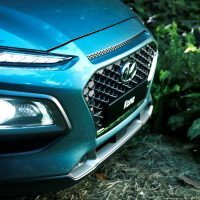
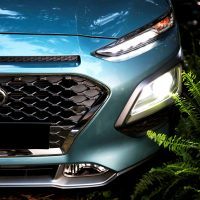
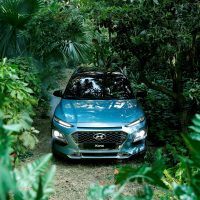
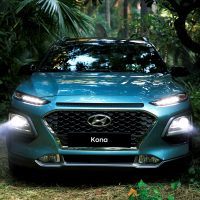
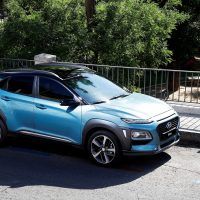
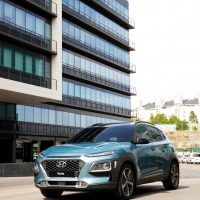
Photos & Source: Hyundai Motor Company.
from Automoblog.net http://www.automoblog.net/2017/06/16/hyundai-kona-the-suv-for-city-folk/
via IFTTT
from Tumblr http://peternpalmer.tumblr.com/post/161896288916
via IFTTT
No comments:
Post a Comment